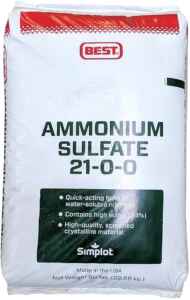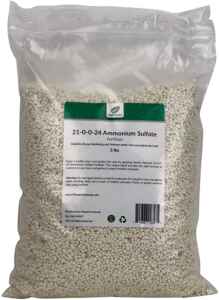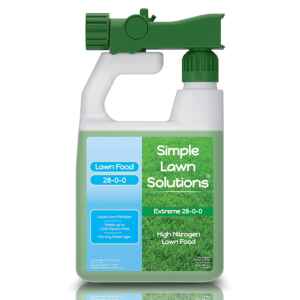Using Ammonia Sulfate on Your Lawn
If you have a lawn, then you need to know about ammonia sulfate. If you are reading this article, it’s because someone probably told you that your lawn is unhappy.
Maybe you tried fertilizing it with something else, but nothing worked. Maybe they recommended liquid or granular fertilizer, which didn’t seem to help. You might have even tried watering the lawn more often, but still, nothing seems to budge your grass from its sickly state.
So, when should you use ammonia sulfate on your lawn? The problem could be as simple as not using the right fertilizer, to begin with: ammonium sulfate (NH 4 – SO 4 ) is specifically made for use on soil and lawns and will provide all of the nutrients that your grass needs if used properly. However, ammonia sulfate is not a miracle fertilizer or wonder drug, and it will only work when used correctly.
Keep reading to learn more about how to properly use ammonia sulfate!
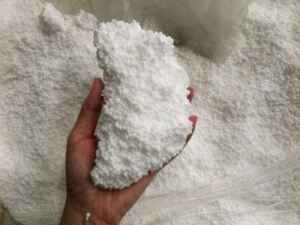 What is Ammonia Sulfate?
What is Ammonia Sulfate?
Ammonia sulfate fertilizer is a common lawn treatment that homeowners use to give their grass the extra boost it needs for greener, healthier grass. Ammonia sulfate can be used either as a stand-alone fertilizer treatment or in conjunction with another lawn fertilizer.
Ammonium sulfate is composed of one nitrogen molecule, four hydrogen molecules, and three sulfur molecules (NH4)2SO4. It has an analysis of 21-0-0 which means it contains 21 percent nitrogen.
The chemical goes through the process of hydrolysis when applied to soil, releasing ammonia gas into the soil and then forming ammonium ions that are taken up by turfgrass plants, according to Iowa State University Extension.
Ammonia Sulfate as a Stand-Alone Lawn Fertilizer
If you only do one lawn treatment per year, ammonia sulfate fertilizer might be the right choice for you. It can help your grass fight off disease and insects. The added fertilization will encourage new root growth and build up its immunity.
You can apply it anytime during the spring and summer months, according to the University of California Integrated Pest Management (UCCIPM). There are two ways that homeowners typically apply it: by hand or with an automatic spreader.
For both applications, follow the instructions on your container of ammonia sulfate for proper dosage rates based on your lawn size. If using a hose-end applicator or drop spreader, set them to use 1 gallon of water per 1 pound of ammonium sulfate.
Ammonia Sulfate to Improve Soil Quality
If you already use another type of lawn fertilizer, such as granular or liquid, ammonia sulfate can be added to your usual application for an extra boost of nitrogen and sulfur.
For example, if your lawn fertilizer has a nitrogen analysis of 28-3-5 and you want the benefits of ammonia sulfate but also want more phosphorus, mix 1/2-pound (about 2 tablespoons) of ammonium sulfate into every 50 pounds (about 5 cups) of your existing lawn fertilizer to achieve a total nitrogen content of 25 percent and a phosphorus content of 0.5 percent, according to University of California IPM.
 Ammonia Sulfate as a Fall or Winter Treatment
Ammonia Sulfate as a Fall or Winter Treatment
When used in autumn or winter, ammonium sulfate can help thicken the grass blades and crust over the soil to prevent water loss, according to the University of Minnesota Extension.
It does this because it takes magnesium out of the soil to form this crusting effect, so be sure your lawn has sufficient supply before applying any during fall months. Because ammonia sulfate is highly soluble in water, the rain will break down any treatments you apply before they get a chance to do their job so applying during rain isn’t recommended.
The best time for fall treatment is just before planting sod or seeding new grass into an area that’s been covered with an impervious ground cover such as brick, asphalt, or stone.
Ammonia Sulfate Precautions and Concerns
Never apply ammonia sulfate to a lawn after it has been seeded to avoid burning the new grassroots, advises Iowa State University Extension.
Don’t use it on newly laid sod since you don’t want to harm it either. Fertilizer granules should never be applied closer than 2 inches from the base of your plant’s stems or crowns because it can damage them, according to California IPM.
If you experience any problems from using this fertilizer treatment, contact your local extension service office for advice on how to proceed further.
Why, When, and How to Use Ammonia Sulfate on Your Lawn:
- It can help your grass fight off disease and insects
- The added fertilization will encourage new root growth and build up its immunity
- You can apply it anytime during the spring and summer months, but not during rainy weather since rain will break it down before it has a chance to do its job
- There are two ways that homeowners typically apply it: by hand or with an automatic spreader
- For both applications, follow the instructions on your container of ammonia sulfate for proper dosage rates based on your lawn size. If using a hose-end applicator or drop spreader, set them to use 1 gallon of water per 1 pound of ammonium sulfate”
- Homeowners typically add it to their existing lawn fertilizer for an extra boost of nitrogen and sulfur. For example, if your lawn fertilizer has a nitrogen analysis of 28-3-5 and you want the benefits of ammonia sulfate but also want more phosphorus, mix 1/2-pound (about 2 tablespoons) of ammonium sulfate into every 50 pounds (about 5 cups) of your existing lawn fertilizer to achieve a total nitrogen content of 25 percent and a phosphorus content of 0.5 percent, according to University of California IPM.
What Is the Best Way To Use Ammonia Sulfate?
So what is the correct way to use it? The easiest way to apply ammonia sulfate is by using granules. Apply them in early spring (end of March, beginning of April) before your grass starts to green up.
Make sure you water the lawn heavily right after applying this fertilizer to get the ammonium ions into the soil where they can be taken up. You should see a change within a week or so if applied correctly – happy grass!
As winter approaches, repeat your application because your grass must have plenty of nutrients going into winter for storage.
When is Ammonia Sulfate Most Commonly Used?
Ammonia sulfate is often used in spring to control the pre-emergent weed grasses. Pre-emergent herbicides work by killing germinating weed seeds before they can be seen.
The fertilizers in many lawn treatments cause the same problems as the pre-emergent, so it’s best to not use either if you plan to do spring fertilizing. If you are looking for a fertilizer that won’t interfere with your herbicide treatment, ammonium sulfate has low nitrogen levels and works well when used with pre-emergent because it does not interfere with their effectiveness.
The best time to put down an herbicide is before any weed seeds have had a chance to germinate and begin growing roots because this gives them no chance to take hold before they are killed by the chemical. If you must apply it after the first weeds have begun growing, be certain that all adult weeds have been removed and then reapply.
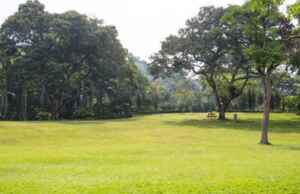 The Size of Your Lawn Matters!
The Size of Your Lawn Matters!
You should also not fertilize if your home contains more than one story or if there are more than 20 large trees within 50 feet of your lawn. If there is more than one story in your home, it is best to use a hose-end applicator as opposed to a broadcast spreader because the granules might simply fall from the upper level onto the grass below.
You can then apply them more finely and evenly with a hose-end spreader on the lower levels. However, if you have tall trees close by, first check for raccoon damage before applying any pre-emergent herbicide so that you don’t kill more squirrels than weed seeds.


